Food labels contain a wealth of information to help consumers make informed choices about groceries and packaged foods. However, decoding these labels can be tricky, as they use complex terminology and tiny text. Recent surveys show that most consumers read food labels at least sometimes, but many still find them confusing.
Understanding how to properly interpret nutrition facts, ingredient lists, health claims, and other details provides valuable insights into the true nutritional quality of foods. Those who master this skill gain immense power to cut through misleading marketing, avoid hidden sugars and unhealthy fats, and select products that truly support their health goals.
Equipped with knowledge and practice, food label reading doesn’t have to be a chore.
Follow these ten tips to become a savvier shopper and make smarter choices!
1. Know Your Serving Size
Paying attention to the serving size listed on a food label is crucial for accurately interpreting the rest of the nutritional information.
The serving size indicates the amount of food on which the rest of the labels’ values are based. However, this may not always reflect how much you eat in one sitting.
For example, according to the label, a small bag of chips may contain 2-3 servings, but most people will likely consume the entire bag in one snack.
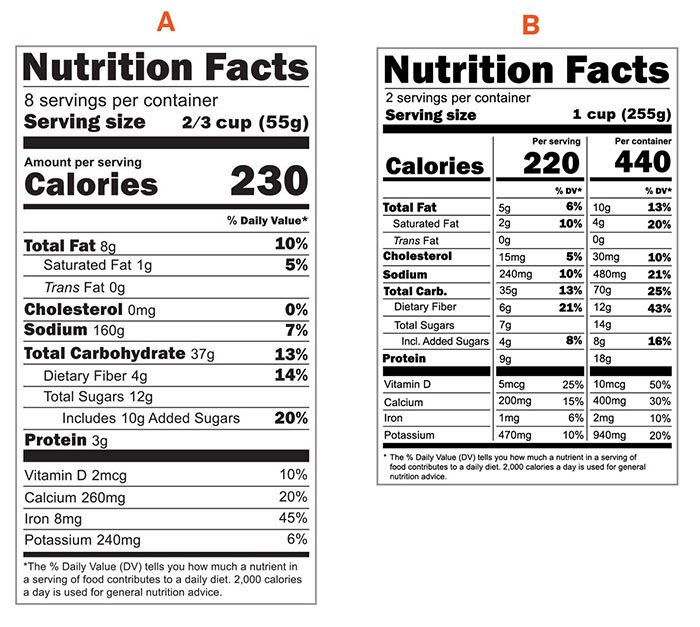
Source: National Institute on Ageing
It’s important not to be fooled by small packages or portion sizes that contain multiple servings.
Note the serving size and the number of servings in the package. Then, consider how the listed serving compares to what you normally eat. Consuming 2-3 servings will impact the calories, nutrients, and other nutritional information that you’re taking in.
Awareness of reasonable serving sizes for different foods and paying close attention to the serving size on labels are key to making informed choices. Don’t underestimate how much you eat based on misleading serving sizes.
2. Ingredient List
The ingredient list contains all the ingredients in a product, listed in descending order by weight.
This means the higher an ingredient appears on the list, the more it is in the product by weight. Focus on the first few ingredients which make up most of your eating.
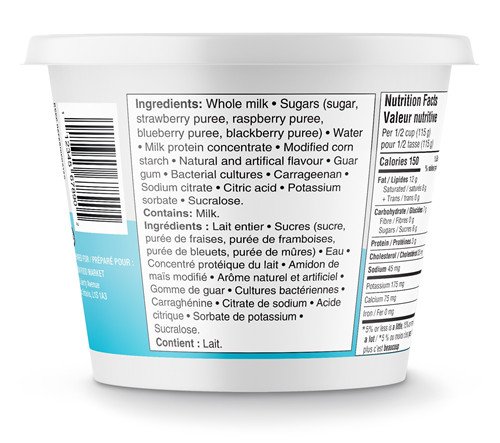
Source: Government of Canada
If added sugars, saturated fats, sodium, and artificial ingredients appear high up on the ingredient list, that is usually a sign the product is not the healthiest option.
Look out for “red flag” ingredients that indicate excessive amounts of added sugars (high fructose corn syrup, sucrose, dextrose, maltose, etc.), unhealthy fats (partially hydrogenated oils, palm kernel oil), sodium (sodium nitrate, sodium benzoate), and artificial additives (artificial Flavors, colours, sweeteners).
The sooner these less desirable ingredients appear on the list, the more caution should be exercised.
It takes some work to decipher ingredient lists, but over time, you’ll better identify the telltale signs of unhealthy products.
Focusing on whole, pronounceable ingredients you recognize is generally a good bet. You can make better choices to support your health and nutrition goals with practice reading labels.
3. The Need-to-Know Nutritional Facts
Regarding the Nutrition Facts panel, there are some key things to pay attention to to understand your consumption.
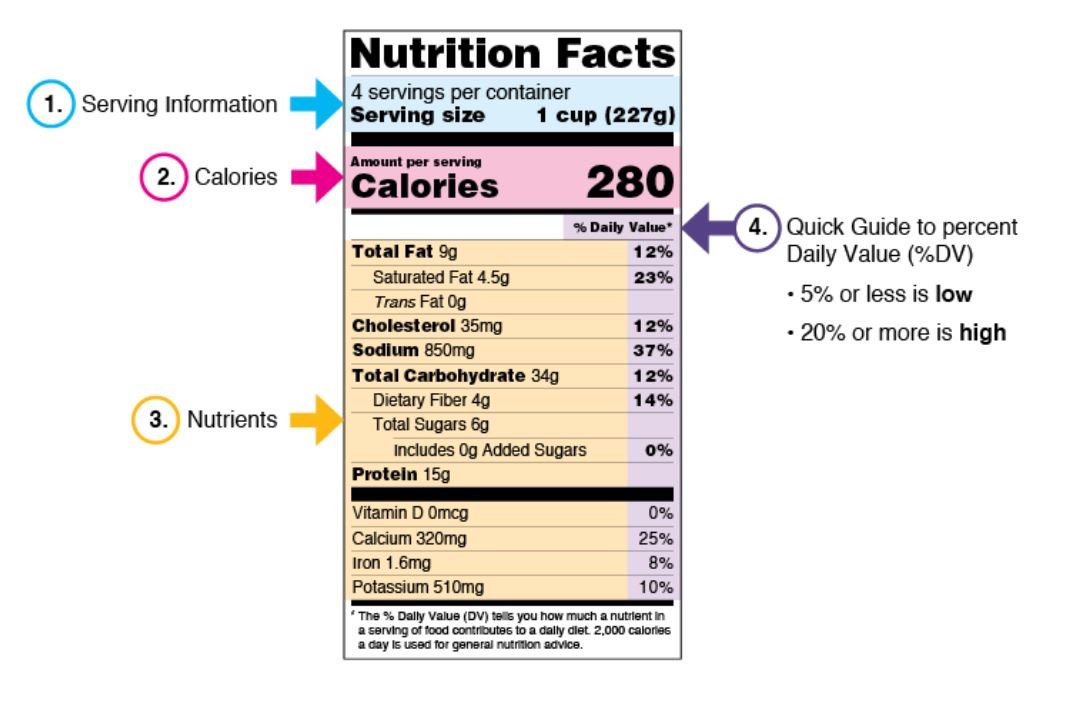
Source: US Food & Drug Administration
4. % Daily Value
The % Daily Value (%DV) indicates how much of a nutrient a serving contains compared to recommendations. As a general rule:
- 5% DV or less is considered low
- 20% DV or more is high
Focus on the %DV for total fat, saturated fat, sodium and fibre to see if the food fits your nutritional needs.
5. Good vs Bad Levels of Nutrients
When reading food labels, focus on the following to distinguish the beneficial and less beneficial nutrients.
- Total Fat: Aim for foods with lower overall fat content, paying special attention to minimize intake of saturated and trans fats.
- Sodium: Seek out options with reduced sodium levels. Foods with less than 5% Daily Value (%DV) per serving are ideal choices.
- Fibre: Fiber is your friend. Aim for fibre-rich choices that offer more than 20% DV per serving.
- Protein: Prioritize protein-rich foods, especially those providing more than 10g per serving.
The %DV is a helpful gauge for assessing whether a food item is high or low in essential nutrients, contributing to a well-rounded diet.
6. Don’t Fall for Marketing Claims
Many packaged foods today include various marketing claims on the label, such as “healthy,” “natural,” or “fat-free.” While these terms sound appealing, they don’t always tell the whole story about the product’s nutritional content.
Food marketers want you to focus on these buzzwords and feel good about their product. But it’s important to look beyond the claims on the front of the package and read the full ingredient list and Nutrition Facts panel.
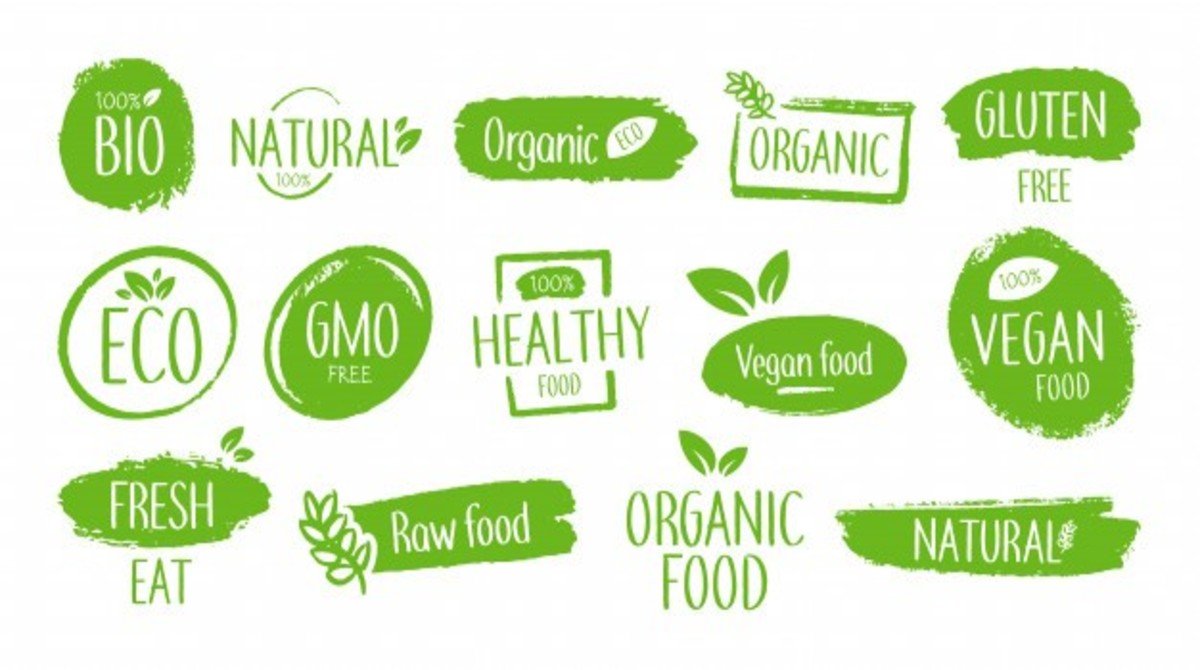
Source: Information Centre
Terms like “healthy” and “natural” are largely unregulated, so their meaning can vary wildly from one company to another. One product marketed as “healthy” could be loaded with added sugars, while another with the same label might be a better nutritional choice.
Similarly, “fat-free” isn’t necessarily a healthy product. It could still be high in calories, sodium, or other undesirable attributes. Essentially, don’t take these claims at face value. Dig deeper into the actual nutrient makeup of the food by studying the full label.
Reading the Nutrition Facts panel and ingredient list, not the marketing slogans, provides the most reliable facts. This takes more time and effort, but it’s the best way to see beyond hype and make informed choices.
With experience reading food labels, those misleading marketing claims will become easier to spot. You’ll develop a healthy scepticism when you see words like “healthy” plastered across the front of a package.
So, remember to focus on the facts of the label, not the flashy marketing claims. Knowing what goes into your food allows you to see through the claims and make the best choices for your health and dietary needs.
7. Compare and Contrast
Use food labels to compare similar products and choose the best nutritional profile for your needs. When comparing products, even across different brands, pay close attention to portion sizes.
For example, you may see two yoghurts that appear comparable at first glance. However, looking at the nutrition labels side-by-side, you notice that Yogurt A has 150 calories per 5.3 oz serving while Yogurt B has 110 calories per 6 oz serving. You might be tempted to choose Yogurt A because it has fewer calories. But when you calculate and compare the calories per ounce, you realize that Yogurt B has fewer calories per ounce (18 cal/oz vs 28 cal/oz) despite having more calories per container.
Paying attention to the serving sizes made the difference in determining which option was the lower-calorie choice.
The same concept applies when comparing ingredient lists. One granola bar may list 7g of sugar per bar, while another list 9g. But again, if you look at the serving sizes, the 9g bar may have less sugar per ounce than the 7g bar.
The moral of the story is not to compare nutrition numbers at face value but to contextualize them appropriately using serving size data. This allows you to make an informed decision about the healthiest option. With practice, you’ll get better at spotting these types of misleading comparisons.
8. Hidden Sugars
Sugar has many names, so you must be a detective when reading food labels.
Watch out for alternate names like high-fructose corn syrup, honey, agave nectar, cane sugar, evaporated cane juice, dextrose, sucrose, maple syrup, and more.
Food manufacturers often break added sugars into these different forms to be listed separately and lower on the ingredients list. But your body processes them all the same way, spiking blood sugar and potentially leading to inflammation, weight gain, and chronic disease.
When scanning the ingredients, add the grams of sugar from all these sources. You may be surprised how much sugar is hiding in foods that seem healthy at first glance.
Some people find it helpful to compare the total sugar per serving (in grams) to the recommended daily limits, like 25g for women and 36g for men. Knowing the number of grams of added sugar (not naturally occurring sugar like in fruit or milk) can help guide your choices. Empower yourself by understanding where sugar hides on labels.
Other things to look for are traffic light labelling, which provides a glance idea about whether a food item is high (red), medium (amber) or low (green) in fat, saturated fat, salt and sugars, and how much energy (calories and kilojoules) it provides.
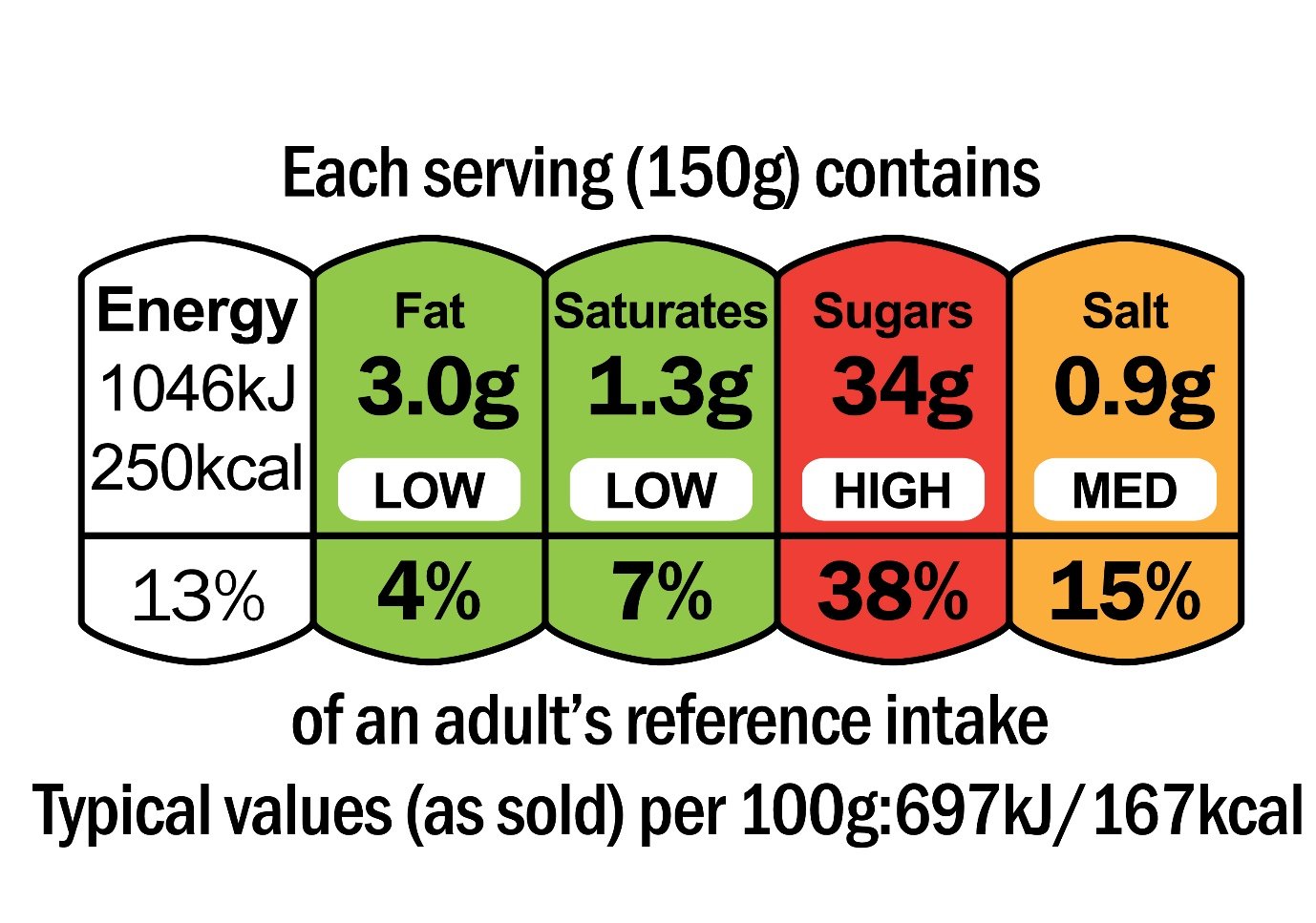
Source: British Nutrition Foundation
9. Choose Fortified and Enriched Options
Look for items with extra nutrients added that fit your dietary needs or provide health benefits. This includes vitamins, minerals, antioxidants, probiotics, and fibre. For example:
- Choose whole grain bread, pasta, cereal or crackers with added fibre. Fiber promotes healthy digestion and heart health.
- Opt for orange juice or milk with extra calcium for bone health, especially for children and women.
- Buy cereals fortified with vitamins and minerals like B vitamins, zinc, and iron. These help fill gaps that diets may be lacking.
- Pick yoghurt with live cultures for the probiotic boost. Probiotics aid digestion and immunity.
- Seek snacks like energy bars with added protein to build muscle and satisfy hunger.
- Select margarine or juices with plant sterols added to help lower cholesterol.
Always check the Nutrition Facts panel to confirm the amounts added and that they provide at least 10-20% of the Daily Value. This ensures you reap real benefits from the functional ingredients added.
10. Consider Dietary Restrictions
When reading labels, it is especially important to scrutinize ingredients if you have any dietary restrictions or sensitivities.
Carefully check labels for common allergens like milk, eggs, fish, shellfish, tree nuts, peanuts, wheat, and soy. Make sure to read the “contains” statement, which highlights whether the product was made in a facility that handles these allergens.
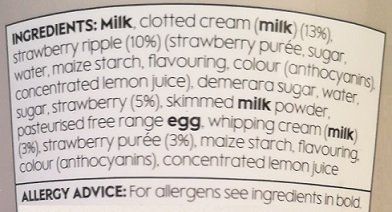
Source: reading.ac.uk
If you have celiac disease or gluten sensitivity, be vigilant about calling out any forms of wheat, rye, and barley.
If you are monitoring your sugar and carb intake, look for alternative names for sugars like high fructose corn syrup, honey, agave nectar, evaporated cane juice, and more.
Count up the grams to understand the full sugar content.
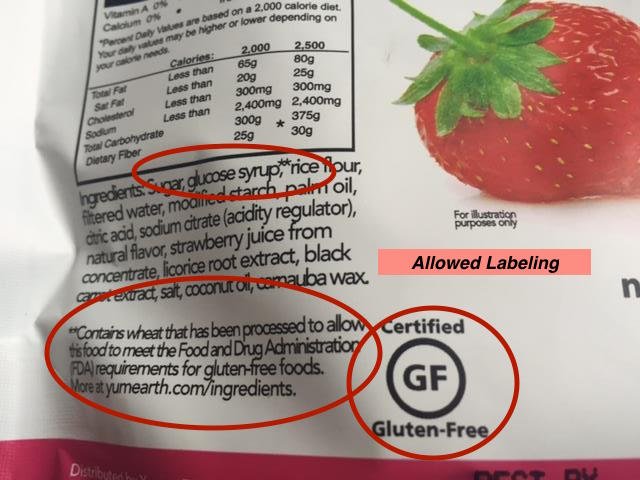
Source: Gluten Free Watchdog
If you follow a vegan diet, read labels to confirm no animal-based ingredients are included.
For vegetarians, look for hidden animal-based components like gelatin or rennet. If you limit ingredients like GMOs or artificial colours, flavours and preservatives, reference the ingredient list to guarantee none are present.
Scrutinizing labels takes diligence and patience but is essential if you have medical conditions or intolerances or adhere to restrictive diets. With practice, you will learn how to identify any ingredients concerning your needs quickly.
Over time, it will allow you to navigate food options and feel empowered about your choices safely.
11. Be Wary of Portion Creep
Pay close attention to the “servings per container” listed on the food label. This is especially important for snacks, beverages, and other pre-packaged foods that may seem like a single portion but contain multiple servings.
Don’t fall into the trap of mindlessly consuming a whole bag of chips or a box of crackers just because they’re in front of you. Even if it seems like it should only be one serving, check the label!
Manufacturers have increased package sizes over time, leading to what’s known as “portion distortion.” We’ve become accustomed to oversized portions, making it hard to recognize appropriate serving sizes. This portion creep makes it dangerously easy to overeat foods high in sugar, fat, and calories.
Stick to the serving size on the label, even if it’s different from what you expected. This allows you to better control portions and calories. If you want more, wait 10-15 minutes before taking another measured serving. Small changes like this can greatly affect your health and waistline.
The key is moderating how much you eat, even with seemingly single-serve items. Food label reading skills help you recognize realistic serving sizes and avoid overeating large packages.
The Bottom Line
Armed with these 10 food label reading tips, you can navigate the grocery aisles confidently and make healthier choices that align with your nutritional goals.
Remember, the key to smarter shopping is understanding the true content behind the packaging.
Paying close attention to serving sizes, ingredient lists, and nutritional facts. Over time, these practices will become second nature, guiding you toward a more informed, health-conscious lifestyle.



